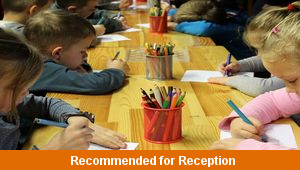Lesson One – Farm Eggs

This numeracy teaching pack for the Foundation Stage gets the children to identify and record the matching sums to ten when counting one less for different numbers of things that can be found and used on a farm.
The class can match cards of pictorial diagrams and number digits to show the matching sums that will result when calculating one less than some of the different numbers to ten.
Download this teaching pack including a lesson plan, classroom activities and an interactive presentation to identify and record the matching sums to ten when counting one less for different numbers of things that can be found and used on a farm
Activities in this teaching pack include a set of cards to select and match numbers that are one less than numbers to ten using diagrams of farm objects and digits and a template to record the matching numbers of eggs to ten that might be carried in a farmer’s basket.
The interactive presentation gets the children to explore how to count one less for different numbers of things that might be found or used on a farm to ten.
This lesson is part of a numeracy scheme of work to get the children to identify and record counted sets of objects that are one less than different numbers to ten on the theme of farms and farming. There are teaching activities for shared learning, differentiated worksheets to support independent learning and interactive presentations to introduce concepts and key skills.
-

Halving Things
Explain and model how to find and record the halves of some of the different objects that can be used at home and in school
-

School Friends
Identify and learn classroom routines and organisation by exploring and describing information and likes and dislikes for each of their classmates
-

Classroom
Identify the location and function of different objects used in the classroom and explore how to formulate rules to manage the classroom safely
-

Shape Patterns
Identify, describe and compare the sequences of geometric shapes that have been used to create a range of different patterns
